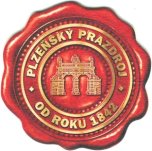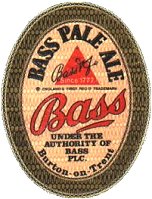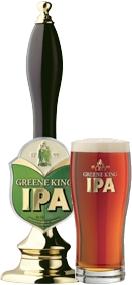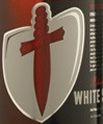 |

|
|

|
|
|
 |

home
about
features
A-Z
books

|

|

Protz:
features
reviews
tastings
|

| |
Pale and interesting
by Willard Clarke, 06/05
Lager beer, most of it a pale pastiche of the golden beers brewed in the Czech Republic and Germany, accounts for more than 90% of all the beer brewed in the world. As a result, it is easy to overlook the
catalytic importance of the pale ales produced in Britain early in the 19th century. Brewers from Munich, Pilsen and Vienna hurried to Britain to study how their counterparts in Burton-on-Trent were able to make
pale ales at a time when most beers were dark, produced with barley malt that was kilned or roasted over wood fires.
| The continental brewers returned home to fashion their own pale beers. The processes were different - ale is made by warm fermentation, lager by cold fermentation - but crucial to both styles was pale malt,
cured in coke-fuelled kilns. It enabled brewers to make both ales and lagers that were bronze, copper or gold in colour. When a new brewery was built in Pilsen in Bohemia in 1842, a coke-fired kiln was imported from
England. The result was the first golden lager, Pilsner Urquell, which was made possible by British ingenuity and technical advance. |
|

|
The original pale ales were made not for the domestic market but for the colonies. Burton-on-Trent in the East Midlands had been a major brewing centre for centuries due to the hard, pure waters found in the springs
and wells of the Trent Valley. Burton Ale, a nut-brown beer, had been popular both in Britain and abroad. The Burton brewers were great exporters and sold beer in particular to Russia and the Baltic states, a trade that,
at its height, accounted for 70% of all the beer brewed in the town.
But the trade collapsed as a result of the Napoleonic Wars of the 18th and 19th centuries, with ports blockaded against British ships. The number of breweries in Burton fell from 13 to five and those that remained were
desperate to find new trade. Salvation arrived in the shape of India.

|
|
Troops and administrators stationed there clamoured for strong and refreshing beer. The brown ales, porters and stouts were not suitable for the torrid
climate. The Burton brewers had heard that a small London brewer named Hodgson at Bow Bridge in the East End was making "ndia Ale" that he exported through the nearby East India Docks. The powerful East
India Company didn't like Hodgson, who failed to pay his bills. As a result, the company suggested to a leading Burton brewer, Allsopp, that he should develop a new pale beer for the India trade. Allsopp's head
brewer apparently spat out a sample of Hodgson's beer as it was so bitter. But he was able to replicate it and improve on it. Allsopp was soon joined by the other big Burton brewers, Bass, Salt and Worthington, all
fashioning new, heavily-hopped and bronze coloured beers for India and eventually further afield to Australia and the Caribbean. |
We know from original Burton recipes that the first India Pale Ales were truly pale, made from pale malt and brewing sugar only and heavily hopped. The Burton waters, rich in such natural salts as gypsum and
magnesium, gave a flinty character to the beer and drew the best from the malt and hops. The beers were strong, around 7 or 8% alcohol. Hops, as well as adding aroma and bitterness to the beers, also kept
bacterial infection at bay as a result of the oils, resins and tannins in the plant. Armed, then, with alcohol and hops, the beers survived the three-month sea journey to Bombay and Calcutta.
Brewers from other parts of England hurried to Burton to open plants there to make use of the water. Edinburgh, with similarly hard and salty water, also became an important centre for brewing export pale ale. As
consumer interest in dark beers waned, pale ales became popular in Britain as well as the colonies. IPAs were too strong for everyday drinking and pale ales, lower in alcohol and hops, were developed for the
domestic market. As brewers learned how to "Burtonise" their brewing waters by adding gypsum and magnesium, pale ales could be made in breweries elsewhere than Burton-on-Trent. At the end of the 19th century,
brewers started to build "tied estates" - pubs directly owned by breweries and tied to them for beer supplies - and supplied them with draught pale ales that were dubbed "bitter" by drinkers.
| Most modern bitters are too dark and too weak to be considered true members of the IPA or pale ale family. Greene King IPA is one of the biggest selling cask ales in the country but its deep copper colour and modest
strength of 3.6% puts it beyond the pale, so to speak. But genuine IPAs are making a comeback. Marston's, one of the few remaining large breweries in Burton-on-Trent, is best known for its Pedigree Bitter. As it is
brewed with pale malt and brewing sugar, has a respectable strength of 4.5% and is well hopped, it should truly be labelled pale ale rather than bitter. Marston's has now added Old Empire, 5.7%, an attempt to reproduce
a genuine Burton IPA of 19th century stock. It is brewed from pale Optic malt only, with no brewing sugars, and the hops are American Cascade and English Fuggles and Goldings. The beer has a sulphury note from
the salty brewing water, with tart citrus fruit from the American hops and biscuity malt on the aroma and palate. The long finish is quenching and bursting with citrus fruit and juicy malt. It is available in cask conditioned
and filtered bottled versions. |
|

|
Also in Burton, the small craft brewer, Burton Bridge (01283 510573), makes a bottle-fermented Empire Pale Ale with a splendid label depicting members of the Raj drinking and cricketing. At 7.5%, this is as true to style
as it is possible to get. It is brewed with

|
|
pale malt, brewing sugar and English Challenger and Styrian Goldings hops. It has pronounced orange fruit note on nose and palate with biscuity malt and earthy and bitter hop
resins. Further north, the Darwin micro-brewery in Sunderland has launched Rolling Hitch, a 5.2% IPA made with pale malt and a new American hop variety from Washington State, Amarillo, which should go straight
to the top of the hit parade. It has a powerful punch of hop resins and citrus fruit on the nose, biscuity malt in the mouth and lemon fruit and bitter hops in the finish. |
| One of the finest interpretations of IPA comes from the United States. Goose Island IPA is brewed in Chicago with American and European pale malts, Czech Saaz and Styrian Goldings hops. With 58 units of bitterness
from the hops, it is one of the bitterest beers in the world. This rich and complex beer has bitter oranges, spices, hop resins and sappy malt on the nose and palate, and a long finish that develops an almost quinine-like
bitterness. It is available in Britain from wholesalers James Clay: [email protected]. |
|

|

|
|
The grand-daddy of IPAs, the bottle fermented Worthington's White Shield, is still available and brewed in Burton-on-Trent. A direct descendant of Victorian Burton beers, the 5.6% ale is brewed with pale malt, a touch
of darker crystal malt, and Challenger, Fuggles, and Goldings hops. It has a sulphury, spicy nose, with peppery hops, juicy malt and tart fruit in the mouth, and a long finish packed with hop bitterness, tangy fruit and
biscuity malt. It is widely available and brings a true taste of old Burton. |
This article first appeared in Fine Expressions magazine, May 2005
|
|
home
about
features
A-Z
books
|

